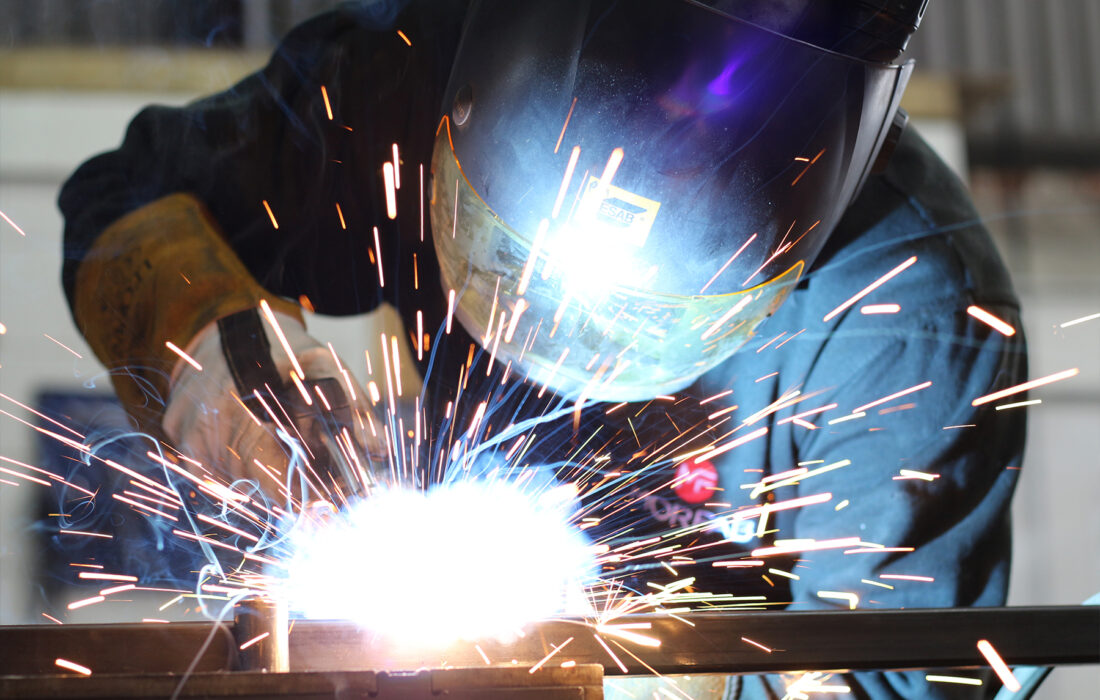Top Methods for Optimizing Steel Manufacture Processes for Maximum Performance
From careful layout planning to embracing advanced technologies, the pursuit for optimal performance in steel fabrication includes a multifaceted strategy. Let's discover how these approaches can change steel manufacture procedures, leading the way for unmatched performance and competitiveness in the market.
Efficient Format Planning
In the world of steel fabrication processes, tactical and effective design preparation plays a pivotal duty in simplifying manufacturing process and making the most of operational performance. The layout of a steel construction center straight influences the efficiency of operations, product flow, and worker productivity. By meticulously developing the arrangement of machinery, workstations, storage areas, and material handling equipment, firms can significantly lower unneeded motion, decrease material managing times, and maximize the overall production procedure.
A reliable format strategy considers factors such as operations series, distance of workstations, product handling routes, and security policies. It aims to produce a rational and streamlined flow of tasks from raw product intake to the end product dispatch. Through reliable design planning, business can eliminate bottlenecks, lower manufacturing downtime, and boost the total operational effectiveness of the steel fabrication process.
Additionally, a well-thought-out design strategy enables much better utilization of readily available room, boosted communication between employees, and improved safety techniques within the facility. In general, spending time and sources in developing a reliable design plan can yield substantial advantages in terms of boosted productivity and expense financial savings for steel fabrication organizations.
Advanced Reducing Technologies
Using cutting-edge innovations in steel construction procedures improves accuracy, efficiency, and overall production top quality. Additionally, plasma cutting innovation has likewise reinvented steel fabrication by making it possible for swift and accurate reducing via electrically conductive materials. By incorporating these advanced reducing modern technologies into steel construction procedures, suppliers can considerably increase efficiency, lower production times, and eventually improve the top quality of their items.
Automated Welding Solutions

Among the key benefits of automated welding systems is their ability to preserve a high degree of accuracy throughout the welding procedure. The precision used by these systems makes sure that welds are uniform and meet the called for specs, causing stronger and more reliable metal structures. Furthermore, automated welding systems reduce the risk of human error, causing less problems and remodel.
Additionally, these systems can take care of complicated welding tasks with ease, including welding in limited areas or on bent surface areas. This flexibility makes automated welding systems appropriate informative post for a wide variety of steel fabrication applications, from large industrial jobs to elaborate custom-made layouts. On the whole, the application of automated welding systems in steel construction procedures substantially boosts effectiveness, quality, and total job outcomes.

Supply Administration Solutions
Enhancing operational efficiency and streamlining procedures, reliable stock management remedies play an important duty in maximizing steel construction operations. By executing robust supply management systems, steel manufacture firms can ensure that the right materials are readily available when required, minimizing interruptions and delays in production timetables. Making use of innovative software application options permits real-time tracking of stock degrees, allowing accurate forecasting of product needs and avoiding stockouts or overstock scenarios.
Additionally, inventory monitoring solutions help in decreasing carrying costs connected with excess stock and improve capital by aligning stock degrees with real need. By categorizing materials based upon use frequency and urgency, makers can prioritize procurement and storage area allotment, even more improving operational efficiency. In addition, applying barcode or RFID modern technology helps with precise inventory monitoring and simplifies the tracking of material movements within the center.
Constant Process Renovation
To Recommended Site construct upon the gains made through effective supply monitoring remedies, the emphasis currently shifts towards driving continual procedure enhancement within steel manufacture procedures. Constant procedure improvement is a systematic strategy aimed at enhancing performance, reducing waste, and increasing general top quality throughout the manufacture procedure. By applying a culture of continuous enhancement, steel construction firms can recognize traffic jams, streamline operations, and enhance resources to make best use of productivity.
One key element of continuous process enhancement in steel construction is the regular review and evaluation of manufacturing procedures. This involves gathering feedback from workers, monitoring key performance indications, and identifying locations for improvement. By leveraging data-driven understandings, business can make enlightened choices to drive purposeful modifications that favorably affect procedures.
Moreover, taking on lean production principles can dramatically add to process enhancement in steel manufacture. steel fabrication melbourne. Strategies such as value stream mapping, five company, find out here now and Kaizen events can assist remove non-value-added activities, systematize processes, and foster a society of advancement and continuous learning within the organization
Final Thought
To conclude, enhancing steel fabrication procedures for optimal effectiveness calls for mindful planning, making use of innovative reducing technologies, executing automated welding systems, taking care of supply successfully, and continually boosting procedures. By including these strategies, manufacturers can boost performance, reduce costs, and boost overall performance in the steel construction sector.
Via reliable format preparation, companies can eliminate traffic jams, reduce production downtime, and improve the general functional efficiency of the steel fabrication process. steel fixing.
Making use of cutting-edge innovations in steel fabrication procedures improves accuracy, performance, and overall production top quality. By incorporating these sophisticated cutting modern technologies right into steel manufacture processes, manufacturers can significantly boost efficiency, lower production times, and inevitably improve the high quality of their products.
Generally, the execution of automated welding systems in steel construction processes significantly improves effectiveness, top quality, and total project outcomes.
One secret aspect of continual procedure enhancement in steel fabrication is the routine evaluation and analysis of manufacturing processes. (steel fabrication melbourne)